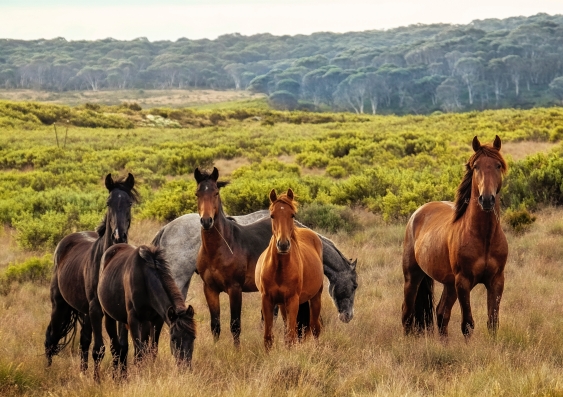Drones track brumby damage for UNSW Canberra researcher
A project led by UNSW Canberra researcher David Paull is tracking in detail the effect of brumbies on some of the nation's most iconic country.
A project led by UNSW Canberra researcher David Paull is tracking in detail the effect of brumbies on some of the nation's most iconic country.

Rachel Packham
UNSW Canberra Media
0423 800 109
r.packham@adfa.edu.au
UNSW Canberra Senior Lecturer Dr David Paull is using drones to track the erosion caused by feral horses.
Dr Paull's research is producing vital 3D computer models of creek banks in the Australian Alps. He discussed his findings at The Kosciuszko Science Conference last week.
“I’m monitoring about 30 different water courses through Kosciuszko National Park and just into Victoria and the headwaters of the Murray River,” Dr Paull says.
“We are using precision surveying equipment with a drone. The 3D models that this technology enables us to build are geographically referenced down to millimetres. We can then go back and take repeat measurements year after year.”
In June 2018, legislation was passed by the NSW Parliament to recognise the heritage value of sustainable wild horse populations within parts of Kosciuszko National Park and to protect that heritage through a wild horse management plan.
The science-based conference provided an opportunity for scientists to discuss the nature of the feral horse threat and to respond to the ramifications of the NSW 2018 Kosciuszko Wild Horse Heritage Act.
The Australian Alps Liaison Committee is funding Dr Paull’s project and is enthusiastic about reviewing outcomes next year.
“Some of the sites along the Murray that I’m tracking are less than a metre wide, where the creek emerges as a trickle, and its being absolutely trashed,” Dr Paull says.
“So here we’ve got Australia’s iconic river, the headwaters of the Murray, and they are just a quagmire from horse impacts.
“At the end of the project I’ll be able to talk about horse impacts in terms of the widening zone, the trample impact and we’ll even be able to count individual puggings – or footprints – and quantify that through time.”
Dr Paull says that this project will provide profound data like volumes of sediment and changes to the condition through pugging, which is difficult to quantify by other means.